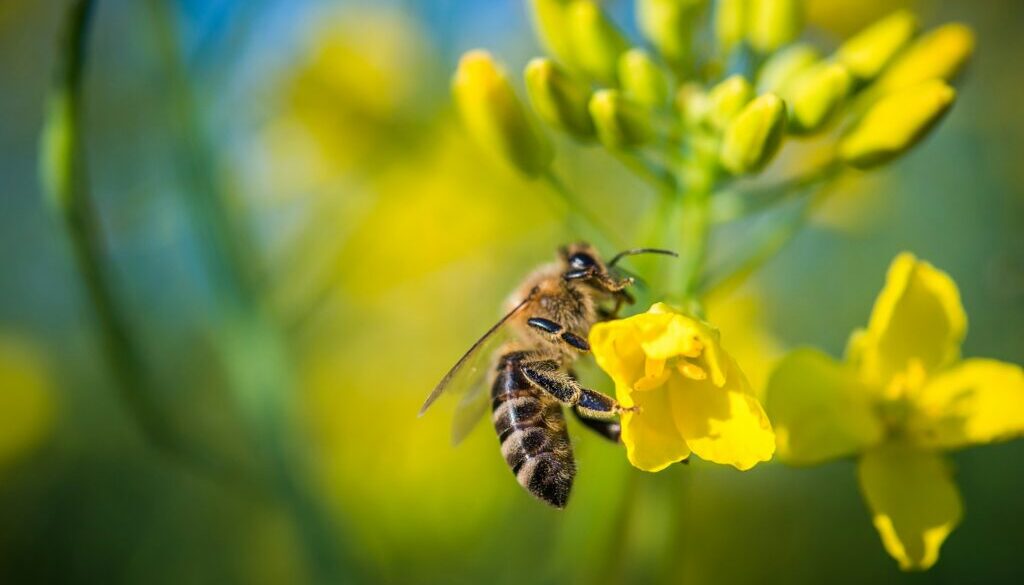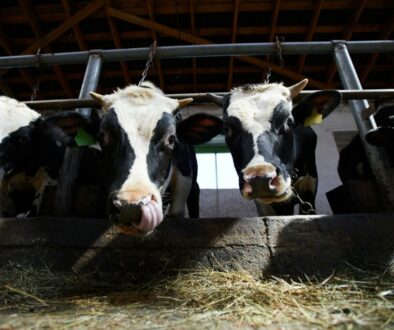Air pollution threatens key crop pollinators, study finds
Air pollution jeopardizes bees and other pollinators essential for food production, according to a new study that sheds light on a significant but underrecognized threat to beneficial insects.
In a study published Thursday in the journal Nature Communications, researchers found that bees, as well as some moths and butterflies, became about a third less efficient at foraging for food, on average, after exposure to elevated air pollution levels. The findings were based on an analysis of data from 120 scientific papers on how 40 types of insects respond to ozone, nitrogen oxides, sulfur dioxide and particulate matter.
“Air pollution is not generally considered as a driver of pollinator declines, but these results indicate that air pollution should be considered as a further factor that is driving pollinator declines,” said James Ryalls, an ecologist at the University of Reading and an author of the study. Declines in pollinator health can translate to declines in crop yields, Ryalls said.
The researchers noted that insects generally seen as harmful to agriculture, such as sap-sucking aphids, did not experience significant declines in their ability to forage from exposure to air pollution.
Air pollution may be more disruptive for bees and other insects because it muddles the chemical signals they use to communicate and sense their surroundings, the researchers suggest, while pests tend to rely more heavily on visual cues or others.
Surprisingly, even low concentrations of air pollutants below the threshold considered safe for humans harmed the pollinators, Ryalls said.
“While the results of this analysis provide further evidence that reducing emissions of all air pollutants should be a priority, they indicate that an increased focus on reducing, or at least restricting, increases in ozone could be particularly advantageous for beneficial invertebrate species,” the study warns.
A related 2023 study found that ozone can change the odors given off by flowers, dramatically reducing how well honeybees recognize them, while a separate 2024 study found that both ozone and nitrate air pollution made it harder for pollinators to find flowers.
Recent research has also further added to concerns about how air pollution impacts human health. Chronic exposure to air pollution, including nitrogen oxides and particulate matter, increases risk for developing the autoimmune disease lupus, especially for people with high genetic risk for developing the disease, according to a study published July 10.
Air pollution exposure also increases risk for developing Alzheimer’s disease, according to a study of more than 1,100 participants from Atlanta published in April, and may greatly diminish the chances of a live birth after in vitro fertilization, according to research presented Monday at the European Society of Human Reproduction and Embryology annual meeting in Amsterdam.
The new study’s findings come on the heels of a June 27 Supreme Court decision to block the US Environmental Protection Agency (EPA)’s so-called “good neighbor rule” designed to reduce the spread of air pollution between states, including harmful ozone.
The EPA estimates that the rule would prevent about 1,300 deaths each year and contribute $13 billion to the economy annually for the next two decades.
A brief issued June 24 by the American Thoracic Society and the American Lung Association stated that even ozone concentrations below the national standard of 70 parts per billion are harmful to human health and compared the lasting effects of zone exposure on the respiratory system to sun damage on skin.
Last year, the EPA announced it would launch a two-year review of the national standard for ground-level ozone pollution, delaying updating the standard until after the 2024 presidential election.
(Featured image via Unsplash+ in collaboration with Getty Images.)




